[US] Parenting Values from an American Child's Room
- Release date: May 02, 2025
- 2885 Views
When we look at the way residential spaces are used in other countries, we often find that they reflect the way of thinking and values of that country. In particular, the “children's room” is a space that expresses a country's values regarding child rearing and education, as well as the way parents and children should be. In this article, we will discuss the American way of child rearing as seen through the child's room in the U.S., based on photos of actual homes of people living in the U.S. that are included in INTAGE's Consumer Life Panorama (CLP), a visual database for people living overseas.
Characteristics of children's rooms in the U.S. (1): Children have their own room from an early age.
Do you remember when you first had your own room for your child?
In Japan, there are probably not many people who have had their own children's rooms since they were babies, and most of them probably started having their own rooms after kindergarten.
In addition, as the Japanese saying goes, “sleeping in the character of a river,” many people probably slept with their parents when they were young.
Here, I would like you to look at the image below.
This is an image of a family in the U.S. with a child under one year old, and you can see that the crib is placed inside the child's room.

Reference: INTAGE Consumer Life Panorama
A child's room in an American household. A crib is placed in the room.
In many cases, children in the U.S. have their own room and sleep alone from an early age. This is an expression of the American educational approach of “respecting the individual and fostering a child's sense of independence. In the U.S., there is a tendency to have children become accustomed to sleeping alone from an early age to give them a sense of independence.
Looking at this room, some people may worry about what to do if something goes wrong with the baby. However, in the U.S., many families have baby monitors installed in the baby's room, and the trend seems to be to foster a sense of independence while keeping an eye on the child's safety through the monitor.
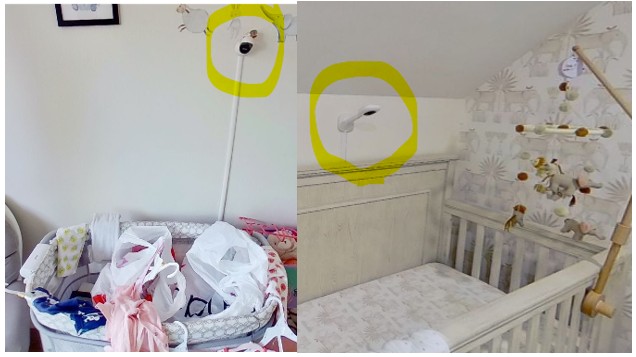
Children's rooms are often located in places where an adult can quickly get to them, such as right next to the parents' room or right next to the living room.
Thus, in the U.S., while ensuring the minimum level of safety for children, many families set up children's rooms from an early age in order to nurture a sense of independence.
Characteristic of children's rooms in the U.S. (2): Few families have study desks in their children's rooms...?
In Japan, “study desks” and “beds” are probably the most common pieces of furniture in children's rooms.
In the U.S., however, there are a certain number of families that do not have a study desk in their children's rooms, as shown in the photo below.
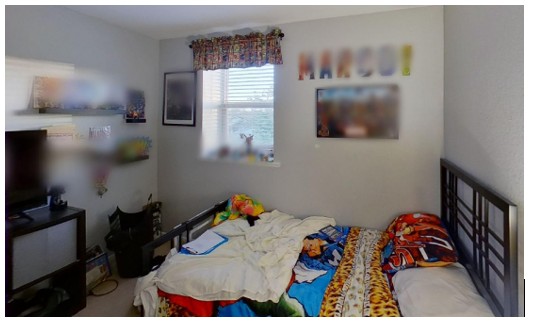
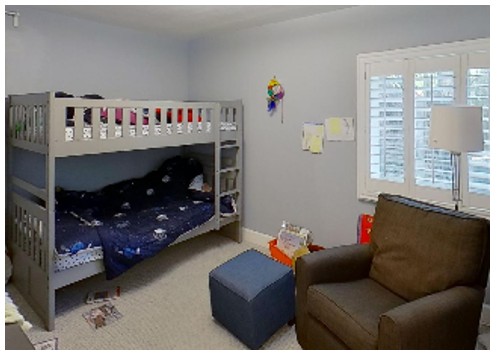
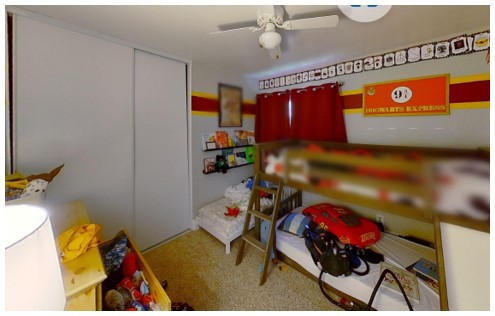
Reference: INTAGE Consumer Life Panorama
A child's room in an American household. There is a bed and a TV, but no desk for study.
So what kind of environment do they study in?
A look inside each home revealed that study materials were spread out in places other than the children's rooms, such as near the living room and kitchen.

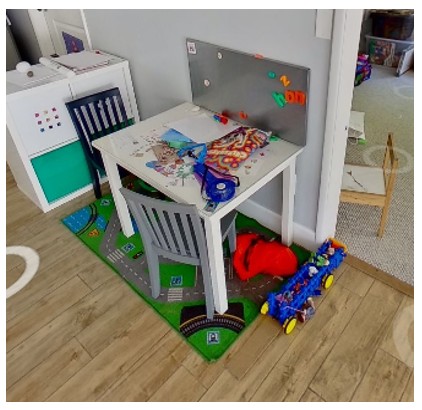
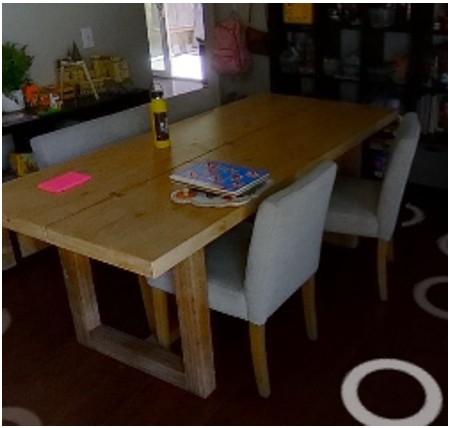
Reference: Intage Consumer Life Panorama
Living and dining room table of an American household.
On the table, tools for children to play and do their work are spread out.
Thus, some American families adopt the style of studying in a place that is easily visible to the parents.
The same style (i.e., a space for children to study in the living room) seems to be seen among Japanese households raising children these days. (In fact, although the author had a study desk in his own room, he sometimes studied in the living room with his parents when he had trouble concentrating.)
In terms of study tools used, paper textbooks and writing utensils were used, and there were no cases of widespread use of tablets for studying in the U.S.
Thus, it is characteristic that children in the U.S. do not have a study desk in their rooms, but rather study in a place where they can be seen by their parents.
Characteristic of American children's rooms (3): Expressing one's individuality
Have you ever had the experience of decorating your child's room with your favorite characters and hobbies? This is a characteristic of children's rooms in both Japan and the United States.
In Japan, however, it is more common to decorate a part of the room rather than the entire room, including the walls.
Let us take a look at some actual US children's rooms.
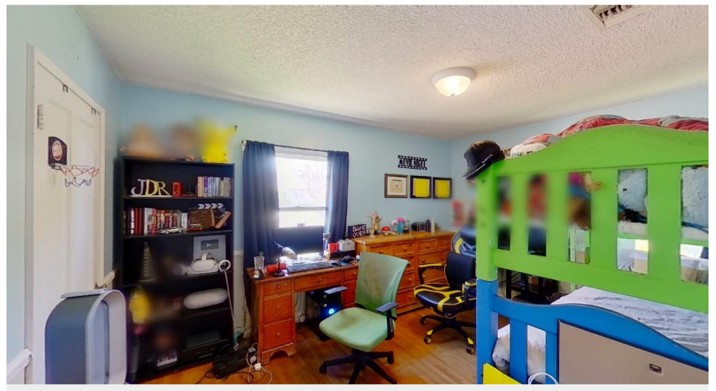
Reference: INTAGE Consumer Life Panorama
A child's room in an American household. Gaming PCs and chairs are placed in the room.
The presence of a gaming PC and a gaming chair in this room suggests that this is a child who likes to play games.
It is also inferred that he distributes games, as there is a microphone on the desk and a YouTube silver plaque on the bookshelf.
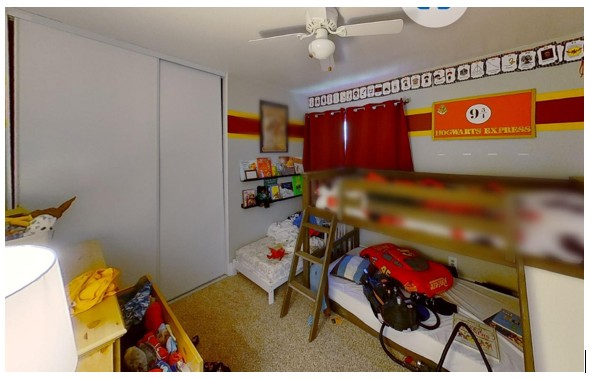
Reference: INTAGE Consumer Life Panorama
A child's room in an American household. Harry Potter-related goods are lined up.
The room was decorated with Hogwarts Express ornaments and the entire wall was decorated in Harry's dormitory (Gryffindor) colors (red and gold), suggesting that the child was fond of Harry Potter.

Reference: INTAGE Consumer Life Panorama
A child's room in an American household.
Posters on the wall (left), Pokemon cards (center), Super Mario lights (right), and other goods.
This room also has decorations on the entire wall.
The room is also furnished with Pokemon cards, Nintendo Switch game controllers, and a light shaped like a HATENABLOCK from Super Mario Brothers, suggesting that the child is interested in Japanese IP content.
As shown in the above examples, in the US, the entire room, including the interior and walls, can be seen to be customized to the child's taste.
In the U.S., children often live in a single house and are given one room per child. Therefore, they often use the entire room as their personal space and decorate the entire room with their favorite contents. This is also an indication of the American individualistic approach to child rearing, which encourages children to “value their own tastes and express their individuality” from an early age.
In this way, the large number of single-family homes and individualism in the U.S. has led to a characteristic of giving each child a single room and creating a customized space according to the child's tastes and preferences.
In conclusion
Translated with AI Translator
What is Consumer Life Panorama?
This is a website-type database that has accumulated visual data on more than 1,000 sei-katsu-sha from 18 countries around the world. The database includes many 3D models of living environments and 2D data of items owned by each sei-katsu-sha, and is useful for understanding overseas sei-katsu-sha, which is difficult to grasp using only letters and numbers.
For details, click here.
Using visual data such as those cited in this column,
Compare the differences in the attributes of overseas consumers
To get a realistic understanding of the actual usage of each category
To understand the overall lifestyle of target consumers
etc., can be utilized as a “no-go” home visit survey.
-

Author profile
Maaya Noguchi
Joined INTAGE in 2023. Engaged in marketing research in the DCG area, mainly in the service industry.
-

Editor profile
Risa Takahama
After working in marketing research support for Japanese FMCG manufacturers (cosmetics, baby products, food and beverages, etc.) in Asia, Europe, and the United States, from 2019, in her current position, she develops solutions for overseas marketing research for Japanese companies and conducts seminars and other outward communications.
Since the birth of her child, her greatest concern is how to maintain the physical and mental health of her family and herself, and she has been experimenting with various goods and services.
 Global Market Surfer
Global Market Surfer CLP
CLP